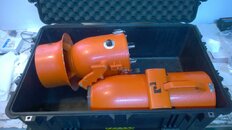Jimf
Registered
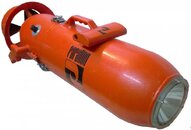
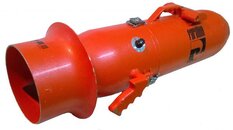
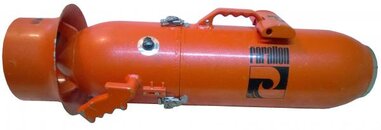
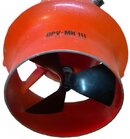 View attachment 215328View attachment 215329View attachment 215330
View attachment 215328View attachment 215329View attachment 215330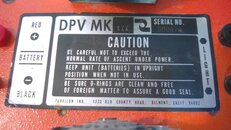
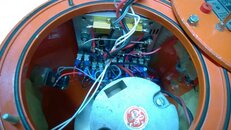
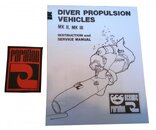
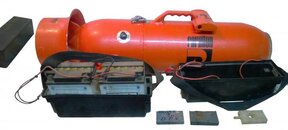
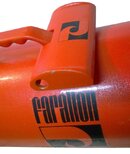
I have a Farallon Mk-III DPV (Diver Propulsion Vehicle / Under Water Scooter) for sale. For a unit made in the 1980s it is in excellent condition with just a few cosmetic scratches in the original paint. The unit was only used in the Great Lakes and has never been in salt water. The main feature of the Mk-III Farallon DPV is the infinite speed control knob near the main off-on trigger. Unlike manually variable pitch propellers the speed control can be used DURING the dive to vary the thrust from 35 pounds down to 5 pounds. Unlike power wasting rheostats that lower the voltage to the motor resulting in high amperage at low speeds, the thrust in the Mk-III is adjusted with a DC electronic square wave generator. The square wave generator gives full voltage to the motor at all times but varies the time duration of high frequency pulses. The motor won’t stall even at low speeds. The efficiency of using a square wave generator results in extended run times and battery life. The user will quickly find that lowering the thrust to ½ does not lower the speed by ½ and it results in much less arm fatigue.
This unit comes with everything shown in the pictures except the actual batteries in one picture including;
- The DPV itself
- A Pelican 1650 Waterproof Travel Case for shipping purposes. Good Condition. See attached picture.
- An extra battery tray with wiring and acid-overflow traps (to allow one set of batteries to be charged as the other set is being used)
- The optional wrist gauge mount for a compass and depth gauge
- A copy of the owner’s manual
- And even a rare and COOL Farallon Jacket Patch:cool2:.
This unit has always been stored in a cool, dark dry location when not in use.
Here are some of the specs as listed in the owner’s manual;
- Rated max depth, 300 feet (that’s much more than most modern DPVs)
- 34 inches long, 8 inches diameter
- Weight at the surface, 50 pounds with batteries (equal to a full patio-grill propane tank). In fresh water, 2 pounds negative with trim weight, ½ pound positive without trim weight.
- Full Speed pulling the average equipped Scuba Diver, 2.5 Knots (~3 Miles per Hour)
- Batteries, two lead-acid motorcycle type in series, delivering 24 volts.
- Shipping weight in crate (no batteries)(when Farallon shipped it to dealers) 37 pounds
- Body material, 6063-T6 Marine Aluminum
Video showing Speed Control working;
Divers who haven’t used a DPV often don’t understand the ways they can be used. Of course an entire dive spent behind a DPV means that much more area can be covered in less time using less air. For me this meant the layout of a shipwreck or quarry bottom was much better understood as a whole, compared to diving the same area in sections over several swim powered dives, sometimes over several weeks. I was able to do off-shore wreck dives by getting from shore to the wreck behind the DPV, leaving the DPV attached to the wreck with a lanyard (the bright orange color helps relocate it), and then photographing the wreck while swimming. After the photos were taken, I returned to the DPV and used it to return to shore. Snorkeling with the DPV was a LOT of fun. The reduced drag without the SCUBA gear meant much faster speeds and less arm fatigue. Because you’re expending less energy your depths and bottom times can increase (Using common sense safety precautions!). Other than safety, the only other consideration snorkeling with a DPV is making sure your swim trunks are tightly tied. I’ll never forget the snorkel dive when I lost my trunks to the current:blush:!
I have never understood why DPVs never became more common in Scuba. They are expensive, but what other piece of Scuba gear isn’t? They are a recreational vehicle for our sport much like the Jet-Ski or ATV is for others. My dive buddy also had a Mk-III and it really expanded our diving range and possibilities. I made quite a few solo as well as dives with fin propelled buddy groups. With the DPV I could get ahead, come around and shot video and pictures of the front of the group coming towards me instead of always getting tail-end shots.
Even though they look fine, the O-ring seals should be replaced on this vehicle. The Farallon part numbers in the exploded view in the owner’s manual contain the standard O-ring codes. For example, the Farallon number for the three O-rings sealing the Speed Control shaft is “2-015”. Ignoring the “2-“, any O-ring vendor can supply you with a “015” O-ring in 70 durometer Buna. This DPV could easily be converted to use lithium polymer batteries if they were stacked to give 20-24 volts, increasing the time and range considerably.
$790 USD (Firm) includes the DPV itself AND a Pelican 1650 Travel Case to ship it in. There aren’t many Farallon DPVs in this pristine condition around available anymore. Contact me by replying to this post. I’m located 20 miles north of Tampa Florida. The buyer would pay shipping so it’s a lot cheaper if you can come by and pick it up. Cash only.
Attachments
Last edited:




